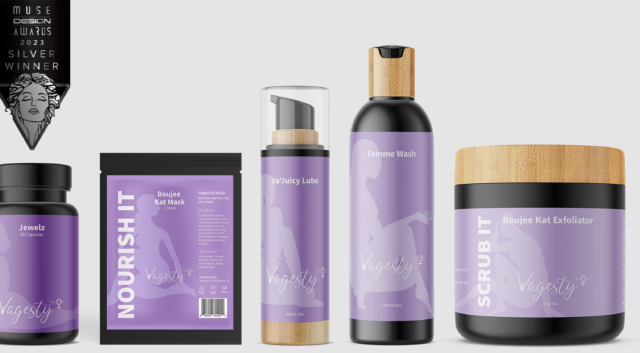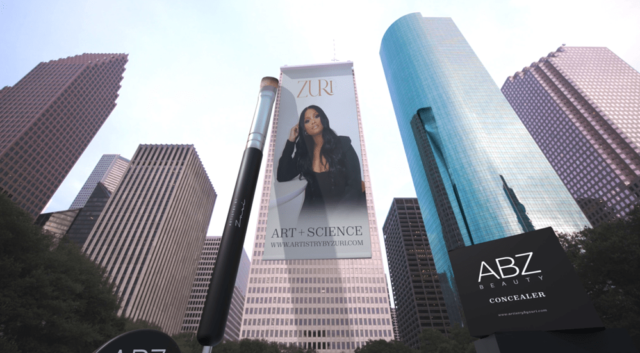The beauty industry is one of the largest in the world. In the United States alone, beauty products are expected to account for more than $62 billion in revenue in 2017, and the global figure is more than four times that.
What that means in practical terms is that the competition in the beauty industry is fierce. The big cosmetics companies are constantly engaged in a battle to win the business of increasingly sophisticated customers. And even in the smallest towns, sometimes two or three hair or nail salons have to compete with one another for a small pool of customers.
The only way to make your company stand out in such a crowded field is with thoughtful branding. The right brand image can mean the difference between success and failure.
The first thing to consider when it comes to branding a beauty company is what people want when they go shopping for a beauty product or service. Since most of the target customers are women, the branding message of companies in this industry can be feminine in a way that would be unwise in many other industries.
The first thing that most women want when they go shopping for beauty products is a sense of elegance and charm. They buy makeup, perfume, and other beauty items because they want to feel good about the way they look. In some cases, they may also be concerned about things like natural ingredients, or playfulness and fun.
Many companies in the beauty industry use script fonts in their logos and branding. While such a font would be unsuitable for, say, an insurance company, it makes perfect sense for cosmetics. The flowing feel of a script font is inherently feminine and conveys an easy elegance that can be perceived at a glance.
Colors are another area where beauty industry branding differs from more conservative industries. Pink is a natural choice for conveying femininity, while purple is elegant and luxurious. A company that makes natural beauty products might want to choose green as the main color in its logo because of its association with nature.
Because the competition is so intense in the beauty industry, it’s important to settle on a logo that will help communicate your company’s mission to prospective customers. For example, a company that makes anti-aging products might want to use images of youth to demonstrate its mission. On the other hand, a company that focuses on flirtation might take a light-hearted approach.
The key to branding your beauty company and winning new customers is to differentiate yourself from your competitors in the market. The process of doing this is a simple one, but it does require some careful thought and analysis:
1) Identify your primary competition. A company that manufactures natural cosmetics might be in competition with other companies who manufacture similar products, while a nail salon in a big city needs to consider the other salons in that area as its main competitors.
2) Consider the products or services you offer and think about what makes your offerings different from those of your competitors. If you offer a particular service that nobody else does, you might focus on that in your marketing. Products that are made in the United States might be appealing to people who care about job creation, while luxury products will appeal to people for whom budget is not a concern. Whatever it is, find something that makes you stand apart from your competitors.
3) Finally, consider who your customers are. If you’re selling high-end anti-aging cream, your customers are most likely women who are middle-aged or older. On the other hand, a salon that specializes in hip nail designs is likely to attract a far younger customer. You should create a detailed customer persona to guide your marketing, and include basic demographic information (age and marital status, for example) as well as behavioral information.
Once you have taken these three steps, you can use the information you have gathered to market your company and products.
Marketing a beauty company requires some careful planning and ingenuity. Because the competition is fierce, you need to take a measured approach before laying out any money on marketing. Here’s how to do that.
The first step is writing up a marketing plan. It’s a mistake to dive into marketing without a plan, and it’s very easy to make a marketing plan that will help guide you along the way.
1) Map out your current positions in terms of sales, profits, and any other metrics that matter to you. It’s important to know where you’re starting if you want to figure out where you want to go.
2) Determine what your marketing goals are. Do you want to increase your sales by 50% in the next year? Expand to a second location? Whatever your goals are, it’s important to articulate them so you can make them a reality.
3) Create a detailed customer personal to help you formulate a marketing strategy.
4) Come up with a marketing strategy, a big-picture view of how you will achieve your goals. For example, a luxury beauty company might focus on Pinterest marketing as a way of reaching out to the affluent women most likely to buy their products. You also need to decide on some marketing tactics – specific things you will do to carry out your strategy.
5) Finally, figure out your marketing budget. How much can you afford to spend, and where do you want to spend it?
Once you have a plan, you can move on to the next step.
One reason that you need to create a customer persona is that it can help you figure out your marketing strategy. Depending on the average age and income level of your customers, you might choose different marketing strategies and tactics to find them. For example:
1) Older, more affluent women are the key demographic that uses Pinterest
2) Young women are more likely to be on Snapchat or Instagram
Those are just two examples, but you need to take the time to determine where your customers spend their time if you want your marketing to be effective.
The benefit of having a striking and memorable logo is that you can use it to attract new customers in an instant. A logo that conveys your brand and personality immediately is one that customers will respond to.
A beauty company logo should appeal to a woman’s sense of self-esteem. You should use it in all of your branded material, including your website. It should be the profile picture on all of your social media accounts, and you can also use it on branded merchandise such as t-shirts and mugs. Have fun with your logo and do everything you can to make it synonymous with your brand.
There’s no question that content marketing is one of the best ways to engage your existing customers and attract new ones. The rule of thumb with content marketing is to post four pieces of content that are purely entertaining or information for every one direct call to action. This ratio ensures that customers feel valued at all times. Nobody follows a company on social media hoping to be bombarded with an endless string of sales pitches.
The beauty industry is a very competitive one, but careful branding and thoughtful marketing can help give you the edge over your competition. Be consistent, know your customers, and have fun – and then watch your profits rise!





